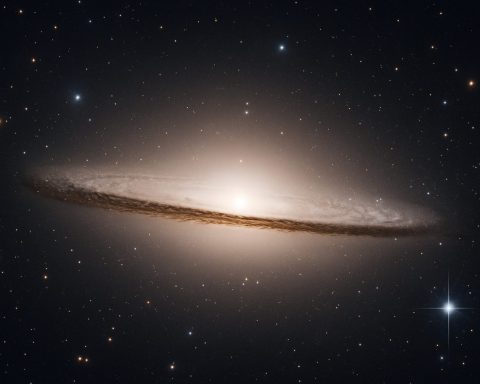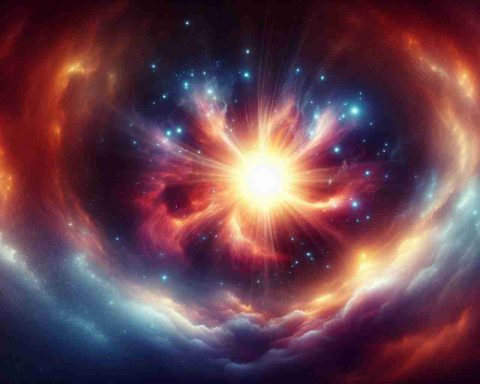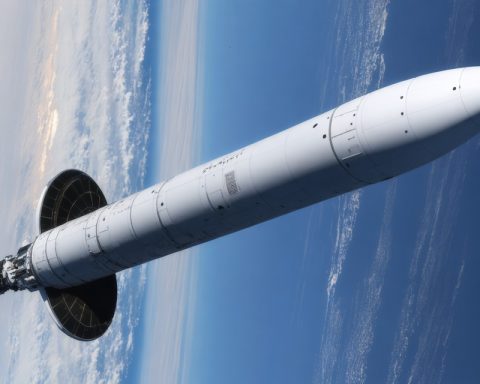- The James Webb Space Telescope (JWST) observed the area around Sagittarius A, our galaxy’s central black hole, 26,000 light-years away.
- JWST’s near-infrared camera revealed two types of flares from the black hole’s accretion disk: faint bursts and powerful, dramatic flares.
- These observations highlight the chaotic and unpredictable nature of the black hole’s activity, likened to cosmic fireworks and tidal waves in space.
- Astrophysicists, including Farhad Yusef-Zadeh, study the flares and theorise that magnetic fields play a significant role in this energetic display.
- The JWST’s findings offer new insights into the mysteries of black holes, underlining the complexity and wonder of the universe.
Amid the vast cosmic silence, the James Webb Space Telescope (JWST) peered into the chaotic blaze surrounding Sagittarius A, the enigmatic black hole 26,000 light-years away at our galaxy’s core. Though the heart of the abyss remains impenetrable, JWST’s near-infrared camera unveiled a symphony of light—a dance of flares shimmering like celestial fireworks.
Picture the accretion disk encircling the black hole: a swirling vortex of hot gas bending under intense gravity, light distorting as it curves across the heavens. Over the course of one year, JWST captured hours of stunning activity, revealing two different kinds of flares—faint, flickering bursts like cosmic whispers and powerful, dramatic flares reminiscent of tidal waves crashing through space.
Astrophysicists watched in awe as the black hole’s restless energy painted the cosmos, a divine artist at work. The rapid shifts in brightness and the apparent spontaneity of these changes suggest a chaotic and unpredictable nature. Sometimes, the mere hint of brightness signalled the onset of a much larger upheaval, whispering secrets of the unseen cosmos.
Farhad Yusef-Zadeh and his team, their eyes glued to the evolving display, grappled with the question: why does this chaotic entity behave as it does? Their theories suggest magnetic fields dance upon the black hole’s stage, but the full story remains a mystery, hidden in the depths of the dusty disk.
As we turn our eyes to Sagittarius A, it’s not only a glimpse of majestic chaos but a reflection of the strange and wonderful universe we call home. JWST has begun a new chapter in our understanding of these cosmic giants, where every flare is a page waiting to be turned. The mysteries lurking within continue to beckon.
Unveiling the Mysteries of Sagittarius A: Discover What the James Webb Space Telescope Revealed
How the James Webb Space Telescope Observes Black Holes
The James Webb Space Telescope (JWST) offers unprecedented capabilities for observing celestial phenomena due to its advanced technology. Here’s a breakdown of how it captures events around massive black holes like Sagittarius A*:
1. Near-Infrared Camera: JWST primarily uses its near-infrared camera to pierce through cosmic dust and gas surrounding black holes. This allows astronomers to visualise regions otherwise obscured.
2. Infrared Sensitivity: The telescope detects the heat emitted by various celestial bodies, making it particularly effective for observing regions with extreme temperatures, such as the accretion disks of black holes.
3. Long-Term Observation: JWST’s ability to monitor these regions over extended periods allows scientists to capture transient phenomena like flares, which can be fleeting yet highly informative.
Real-World Use Cases of JWST’s Findings
– Studying Accretion Disks: By observing flares and gas dynamics in accretion disks, scientists can gain insights into the physics of matter under extreme gravity.
– Mapping Magnetic Fields: Understanding the interaction of magnetic fields around black holes could lead to breakthroughs in plasma physics and magnetic field theories.
– Cosmology and Dark Matter: Observations of celestial events near black holes contribute to our understanding of dark matter distributions in galaxies.
Industry Trends and Market Forecasts
– Rise of Infrared Astronomy: JWST is paving the way for a surge in infrared astronomy, pushing the demand for more sophisticated ground-based and space telescopes.
– Technology Development: Enhanced detectors and adaptive optics are becoming key areas of innovation to complement JWST’s findings and improve observational accuracy.
Reviews and Comparisons
The JWST is often compared to its predecessor, the Hubble Space Telescope, with several notable differences:
– Wavelength Range: JWST observes primarily in the infrared spectrum, whereas Hubble covers a wider range, including ultraviolet and visible light.
– Primary Mirror Size: JWST’s 6.5-metre mirror allows for more detailed imaging compared to Hubble’s 2.4-metre mirror.
Controversies and Limitations
– Data Interpretation: The interpretation of infrared data can be complex and may require advanced software and modelling techniques.
– Access to Data: Although JWST’s data is a public resource, prioritising observations often leaves some astronomical phenomena less studied.
Security and Sustainability
– Shielding and Cooling: JWST employs a sunshield to maintain the cold temperatures necessary for accurate infrared observations.
– Data Storage and Transmission: Its data is securely transmitted to Earth for analysis, ensuring the integrity and longevity of its scientific contributions.
Insights and Predictions
– Black Hole Studies: JWST could redefine our understanding of black hole formation and their influence on galactic evolution over the coming decades.
– Endurance of Mysteries: As more data is collected, scientists anticipate answering some questions while undoubtedly encountering new mysteries.
Pros & Cons Overview
Pros
– High-resolution infrared observations
– Ability to see through cosmic dust
– Long-duration surveys for transient phenomena
Cons
– Limited to infrared spectrum
– High costs associated with space-based observation
– Complex data interpretation processes
Actionable Recommendations
1. Stay Updated: Follow NASA and ESA’s official channels to keep abreast of new findings and developments from the JWST.
2. Engage with the Community: Participate in or follow discussions on platforms like astrophysics forums or conferences for insight into ongoing research.
3. Educational Resources: Utilise educational platforms and public lectures to deepen your understanding of black holes and JWST’s discoveries.
For more information about the James Webb Space Telescope and its mission, you can visit the NASA James Webb Space Telescope main website.












